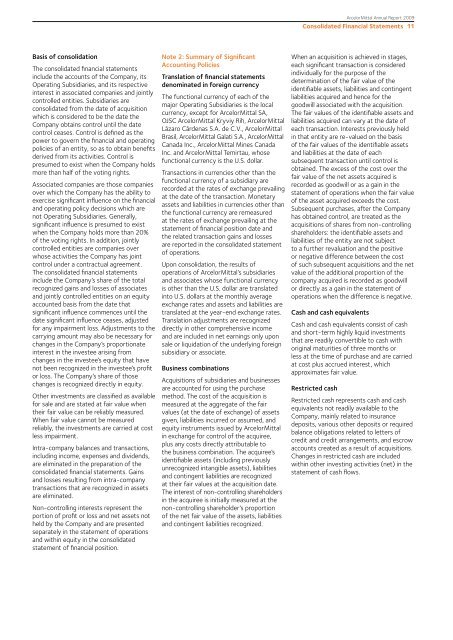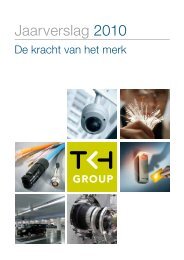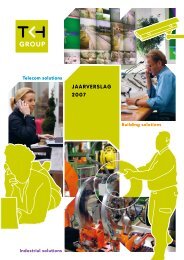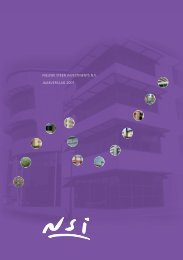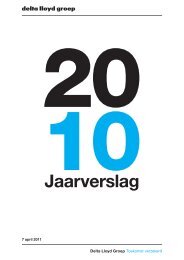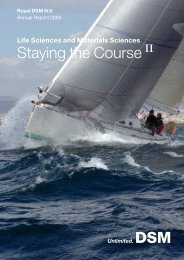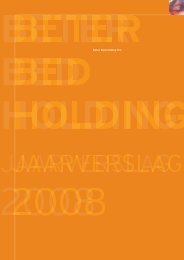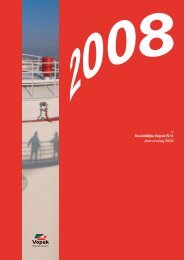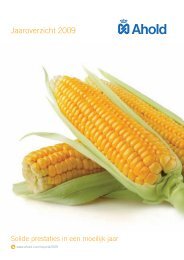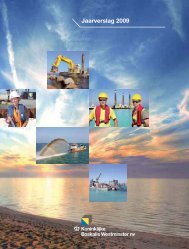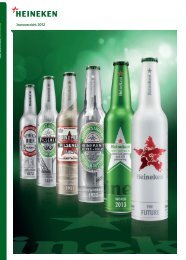Management Report - Beursgorilla
Management Report - Beursgorilla
Management Report - Beursgorilla
You also want an ePaper? Increase the reach of your titles
YUMPU automatically turns print PDFs into web optimized ePapers that Google loves.
ArcelorMittal Annual <strong>Report</strong> 2009Consolidated Financial Statements 11Basis of consolidationThe consolidated financial statementsinclude the accounts of the Company, itsOperating Subsidiaries, and its respectiveinterest in associated companies and jointlycontrolled entities. Subsidiaries areconsolidated from the date of acquisitionwhich is considered to be the date theCompany obtains control until the datecontrol ceases. Control is defined as thepower to govern the financial and operatingpolicies of an entity, so as to obtain benefitsderived from its activities. Control ispresumed to exist when the Company holdsmore than half of the voting rights.Associated companies are those companiesover which the Company has the ability toexercise significant influence on the financialand operating policy decisions which arenot Operating Subsidiaries. Generally,significant influence is presumed to existwhen the Company holds more than 20%of the voting rights. In addition, jointlycontrolled entities are companies overwhose activities the Company has jointcontrol under a contractual agreement.The consolidated financial statementsinclude the Company’s share of the totalrecognized gains and losses of associatesand jointly controlled entities on an equityaccounted basis from the date thatsignificant influence commences until thedate significant influence ceases, adjustedfor any impairment loss. Adjustments to thecarrying amount may also be necessary forchanges in the Company’s proportionateinterest in the investee arising fromchanges in the investee’s equity that havenot been recognized in the investee’s profitor loss. The Company’s share of thosechanges is recognized directly in equity.Other investments are classified as availablefor sale and are stated at fair value whentheir fair value can be reliably measured.When fair value cannot be measuredreliably, the investments are carried at costless impairment.Intra-company balances and transactions,including income, expenses and dividends,are eliminated in the preparation of theconsolidated financial statements. Gainsand losses resulting from intra-companytransactions that are recognized in assetsare eliminated.Non-controlling interests represent theportion of profit or loss and net assets notheld by the Company and are presentedseparately in the statement of operationsand within equity in the consolidatedstatement of financial position.Note 2: Summary of SignificantAccounting PoliciesTranslation of financial statementsdenominated in foreign currencyThe functional currency of each of themajor Operating Subsidiaries is the localcurrency, except for ArcelorMittal SA,OJSC ArcelorMittal Kryviy Rih, ArcelorMittalLázaro Cárdenas S.A. de C.V., ArcelorMittalBrasil, ArcelorMittal Galati S.A., ArcelorMittalCanada Inc., ArcelorMittal Mines CanadaInc. and ArcelorMittal Temirtau, whosefunctional currency is the U.S. dollar.Transactions in currencies other than thefunctional currency of a subsidiary arerecorded at the rates of exchange prevailingat the date of the transaction. Monetaryassets and liabilities in currencies other thanthe functional currency are remeasuredat the rates of exchange prevailing at thestatement of financial position date andthe related transaction gains and lossesare reported in the consolidated statementof operations.Upon consolidation, the results ofoperations of ArcelorMittal’s subsidiariesand associates whose functional currencyis other than the U.S. dollar are translatedinto U.S. dollars at the monthly averageexchange rates and assets and liabilities aretranslated at the year-end exchange rates.Translation adjustments are recognizeddirectly in other comprehensive incomeand are included in net earnings only uponsale or liquidation of the underlying foreignsubsidiary or associate.Business combinationsAcquisitions of subsidiaries and businessesare accounted for using the purchasemethod. The cost of the acquisition ismeasured at the aggregate of the fairvalues (at the date of exchange) of assetsgiven, liabilities incurred or assumed, andequity instruments issued by ArcelorMittalin exchange for control of the acquiree,plus any costs directly attributable tothe business combination. The acquiree’sidentifiable assets (including previouslyunrecognized intangible assets), liabilitiesand contingent liabilities are recognizedat their fair values at the acquisition date.The interest of non-controlling shareholdersin the acquiree is initially measured at thenon-controlling shareholder’s proportionof the net fair value of the assets, liabilitiesand contingent liabilities recognized.When an acquisition is achieved in stages,each significant transaction is consideredindividually for the purpose of thedetermination of the fair value of theidentifiable assets, liabilities and contingentliabilities acquired and hence for thegoodwill associated with the acquisition.The fair values of the identifiable assets andliabilities acquired can vary at the date ofeach transaction. Interests previously heldin that entity are re-valued on the basisof the fair values of the identifiable assetsand liabilities at the date of eachsubsequent transaction until control isobtained. The excess of the cost over thefair value of the net assets acquired isrecorded as goodwill or as a gain in thestatement of operations when the fair valueof the asset acquired exceeds the cost.Subsequent purchases, after the Companyhas obtained control, are treated as theacquisitions of shares from non-controllingshareholders: the identifiable assets andliabilities of the entity are not subjectto a further revaluation and the positiveor negative difference between the costof such subsequent acquisitions and the netvalue of the additional proportion of thecompany acquired is recorded as goodwillor directly as a gain in the statement ofoperations when the difference is negative.Cash and cash equivalentsCash and cash equivalents consist of cashand short-term highly liquid investmentsthat are readily convertible to cash withoriginal maturities of three months orless at the time of purchase and are carriedat cost plus accrued interest, whichapproximates fair value.Restricted cashRestricted cash represents cash and cashequivalents not readily available to theCompany, mainly related to insurancedeposits, various other deposits or requiredbalance obligations related to letters ofcredit and credit arrangements, and escrowaccounts created as a result of acquisitions.Changes in restricted cash are includedwithin other investing activities (net) in thestatement of cash flows.


